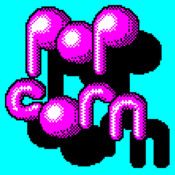Retro Replay Review
Gameplay
Remedy offers a classic point-and-click adventure experience that emphasizes exploration and puzzle-solving over action. Players guide Carol through a series of interconnected locations using the left mouse button, with the cursor automatically transforming into a magnifying glass or hand icon when something can be examined, used, or collected. This streamlined control scheme makes the game accessible to both seasoned adventure fans and newcomers, ensuring that interactions feel intuitive without overwhelming you with complicated commands.
(HEY YOU!! We hope you enjoy! We try not to run ads. So basically, this is a very expensive hobby running this site. Please consider joining us for updates, forums, and more. Network w/ us to make some cash or friends while retro gaming, and you can win some free retro games for posting. Okay, carry on 👍)
The inventory-based puzzles in Remedy strike a comfortable balance between challenge and fairness. Clues are often embedded in the environment or dialogue, prompting players to pay close attention to photographic details and character conversations. While some puzzles require a bit of trial and error—combining tools or backtracking to previous scenes—the game’s incremental hint system (through environmental storytelling and Conrad Vogel’s estate notes) keeps frustration to a minimum. You’ll find yourself jotting down observations and revisiting locations, which reinforces the investigative atmosphere.
As new locations unlock on the map, Remedy gradually expands its world, encouraging you to draw connections between disparate clues. Moving between scenes is smooth, with arrow indicators appearing at screen edges when you hover your cursor in that direction. This visual cue system not only guides exploration but also maintains immersion, as you seldom feel stuck wondering where to go next. Conversation choices appear neatly at the bottom of the screen, allowing you to steer Carol’s inquiries and shape the flow of information.
Graphics
The most striking visual feature of Remedy is its use of real photographs shot on location in Norrköping, Sweden. Each backdrop is filtered through a waterpainting effect that lends a dreamy, almost ethereal quality to otherwise ordinary urban and suburban settings. This artistic choice elevates mundane elements—doorways, alleyways, old factories—into captivating tableau that reward careful scrutiny for hidden clues.
Textural details shine through the watercolor overlay: peeling paint on a dilapidated wall, raindrops on a windowpane, and the play of light across cobblestone streets all feel tactile. This painterly approach also ties seamlessly into the game’s thematic undercurrents, blurring the line between reality and memory, past and present. It’s a subtle reminder that what you see may not fully capture the mystery lurking beneath the surface.
Character models are rendered with photographic realism and then softened by the same filter, giving NPCs a slightly surreal presence. Facial expressions and body language come across clearly, ensuring that dialogue scenes maintain emotional resonance. Subtle animations—like a colleague adjusting her glasses or a stray dog trotting past—add life to each tableau without distracting from the puzzle elements.
Story
At its core, Remedy is driven by narrative intrigue. You play Carol, an English girl housesitting for her friend Conrad Vogel in Sweden, only to discover he’s died under suspicious circumstances. Motivated by loyalty and curiosity, Carol delves into Conrad’s unfinished case, unraveling a web of secrets that quickly outpace her expectations. Early revelations hint at deeper conspiracies, ensuring that each new discovery raises more questions than answers.
The writing balances atmospheric tension with warm character moments. Dialogue flows naturally, and every interaction with townspeople—be it a wary neighbor or a helpful archivist—feels purposeful. Characters introduce leads, misdirections, or personal anecdotes that enrich the world beyond mere puzzle fodder. Conrad’s legacy looms large through scattered journal entries and voicemail recordings, adding emotional weight to your investigation.
Pacing is deliberate, allowing you to soak in the environment and piece together clues at your own rhythm. Key story beats are timed to reveal just enough information to sustain momentum, yet the narrative remains open-ended, encouraging players to theorize and revisit earlier scenes. By the time you confront the final revelations, you’ll have formed a genuine connection to Carol’s quest—and a satisfying sense of closure.
Overall Experience
Remedy succeeds as a story-driven adventure that champions atmosphere and storytelling over action. The marriage of photographic backdrops with watercolor aesthetics creates a unique visual identity, while the intuitive point-and-click mechanics ensure that the focus stays on investigation and narrative progression. Whether you’re examining a cryptic note or piecing together a mechanical contraption, every moment feels tied to the overarching mystery.
The game’s strengths lie in its ability to keep you engaged through environmental puzzles and well-crafted dialogue. Carol’s journey never feels like a rote fetch quest; each new item or conversation sheds light on Conrad’s untimely death and the broader secrets of the town. Even if you encounter a tricky puzzle, the game’s design nudges you gently toward the solution, minimizing frustration and maximizing that rewarding “aha” moment.
For players who appreciate atmospheric storytelling and cerebral gameplay, Remedy offers a compelling experience that lingers long after the credits roll. Its blend of real-world photography, painterly effects, and a richly layered narrative makes it a standout entry in the point-and-click genre. Whether you’re a veteran detective of adventure games or someone looking for a paced, immersive mystery, Remedy is well worth your time.
 Retro Replay Retro Replay gaming reviews, news, emulation, geek stuff and more!
Retro Replay Retro Replay gaming reviews, news, emulation, geek stuff and more!









Reviews
There are no reviews yet.